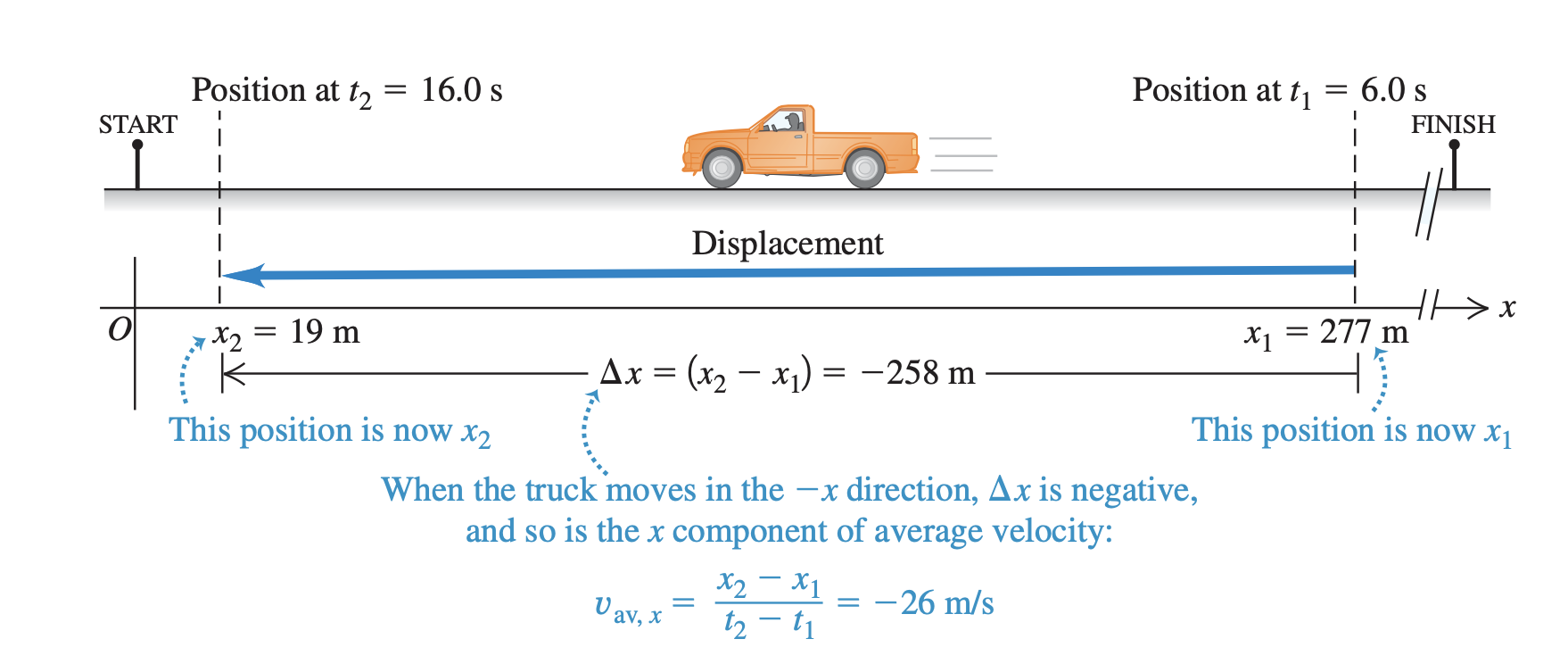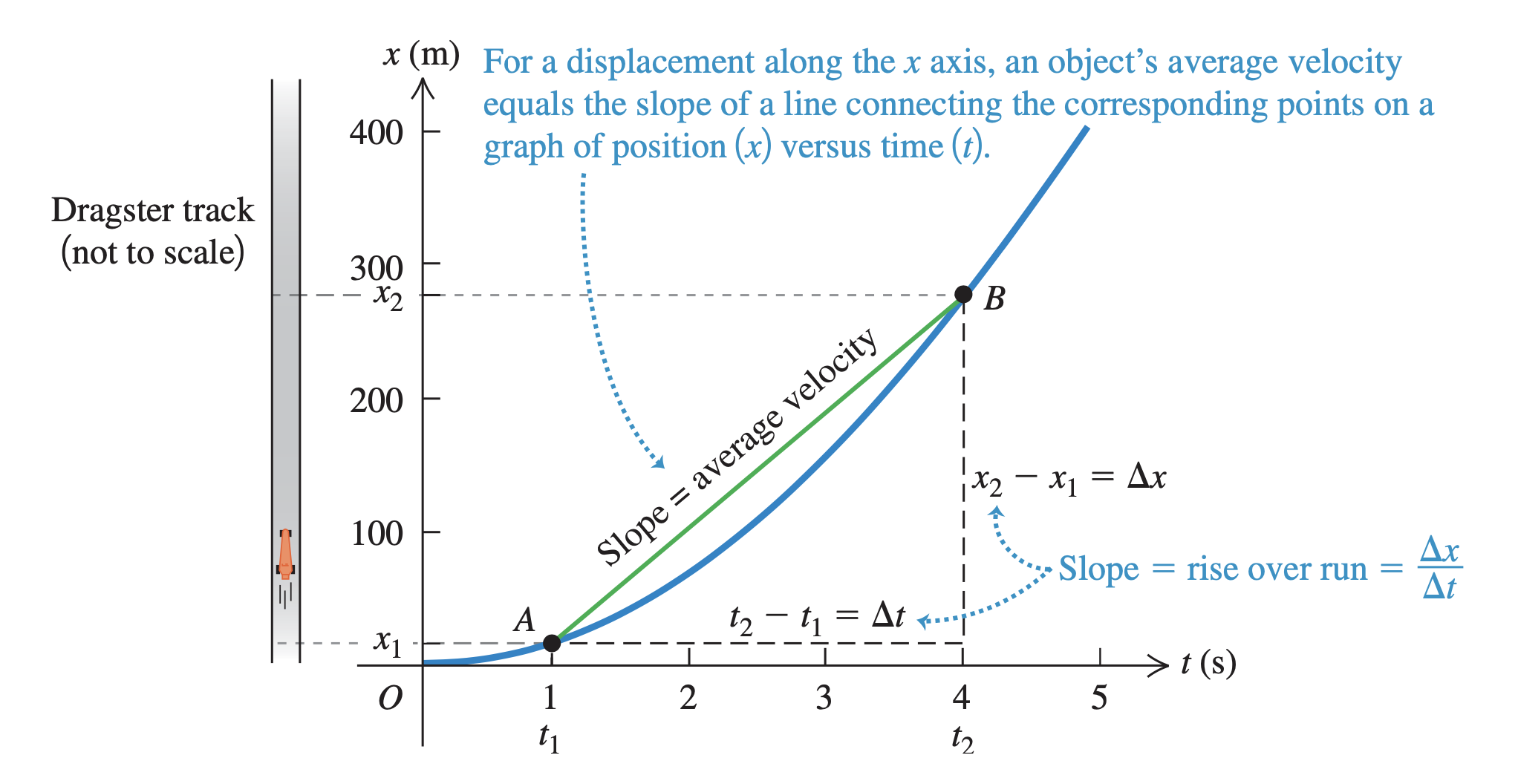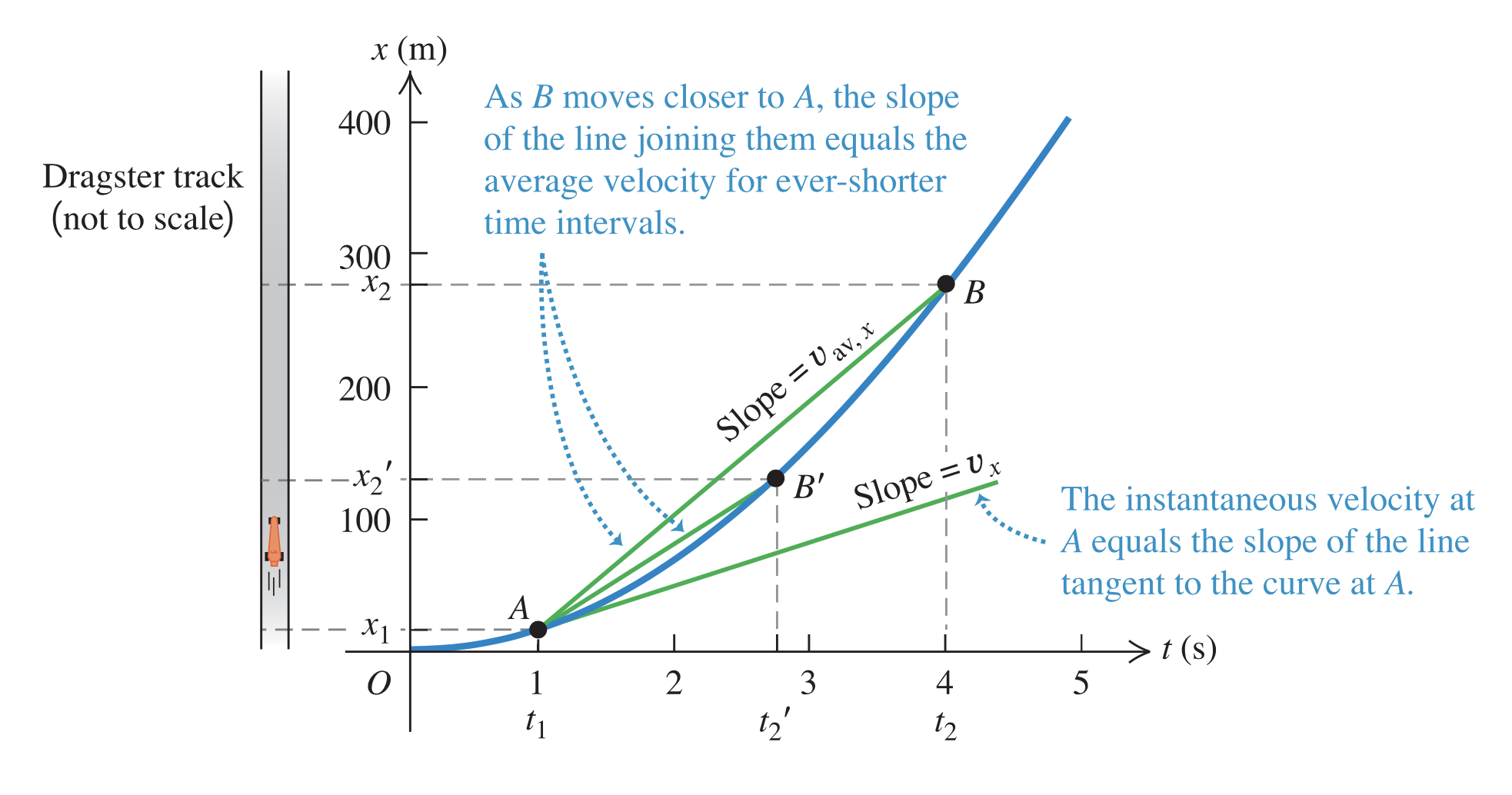One dimensional motion¶
We move along an single axis, from \(x_1\) to \(x_2\).
Displacement¶
Is a vector valued quantity where we move from one point to the other. It is defined by a starting postion ending position and a direction in which an object moves.

The initial position \(x_1 = 277m\) to the ending position \(x_2=19m\) thus the displacement \(\Delta x = -258m\)
Since the value is negative, we know in which direction an particle is moving. (we have only one dimension)
Velocity¶
Is a vector valued quanity, since we allways divide the displacement by time.
Average velocity¶
\(\Delta x = x_2 - x_1\)
\(\Delta t = t_2 - t_1\)
It is the displacement divided by the time it took to displace.
Example: An car is at \(t_1 = 1s\) in position \(x_1 = 19m\) and moves along the x axis. At \(t_2=4s\) is at \(277m\) The average veloity is $\(v_{av} = \frac{277-19}{4-1} = 86 \text{m/s}\)$
We can express the movement of a particle along a straight line as function:

The average velocity between two positions is the slope of a line connecting the two corresponding points on a graph of position as a function of time.
Instantaneous velocity¶
In general velocity is not constant, the instantaneous velocity is the velocity of a particle at any one specific instant of time or point in path.

The instantaneous velocity at any point is equal to the slope of the tangent line to the curve at that point.
Acceleration¶
Here we accelerate in one dimension, mostly focusin on constant acceleration.
